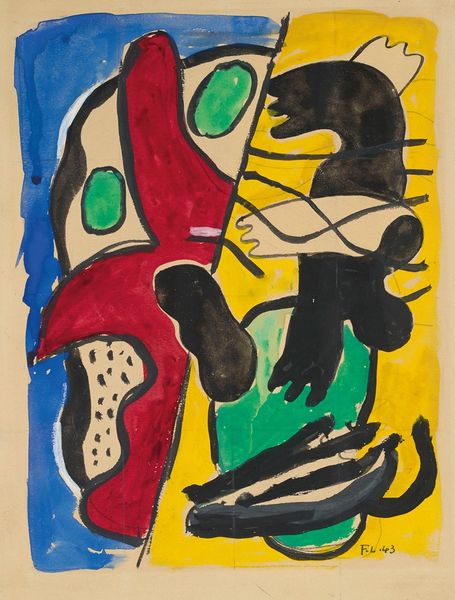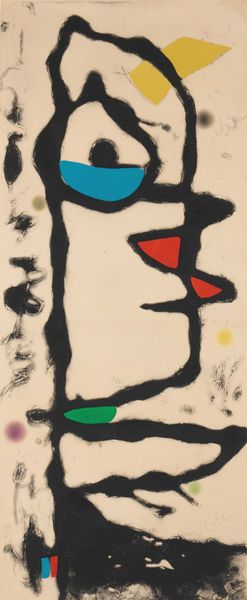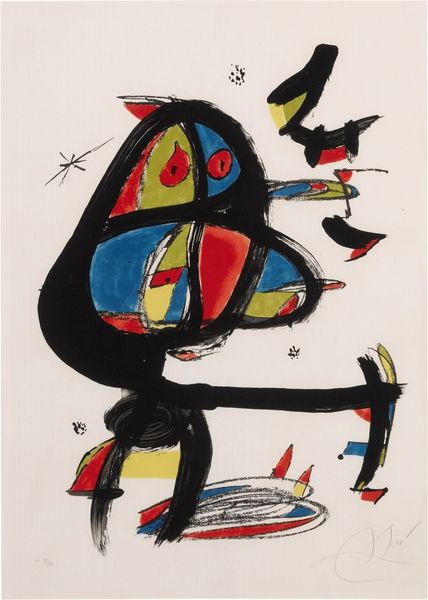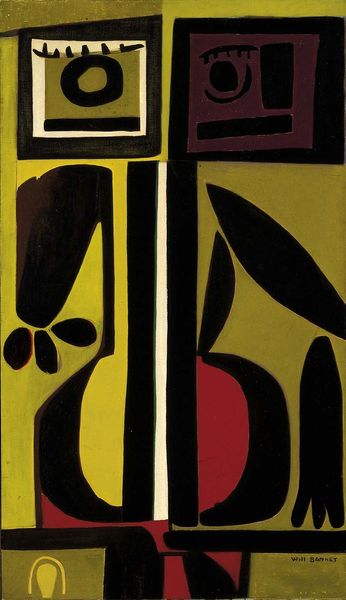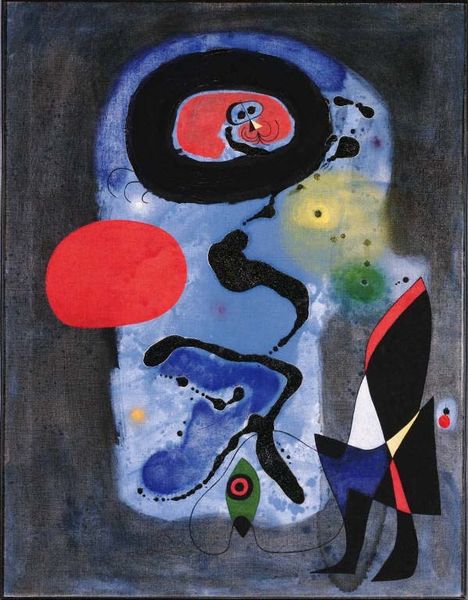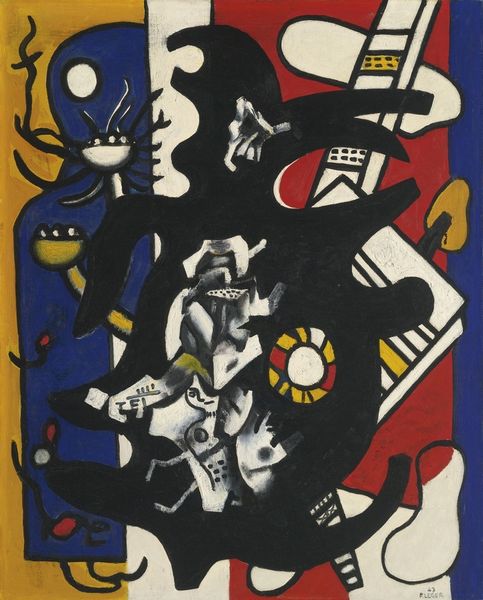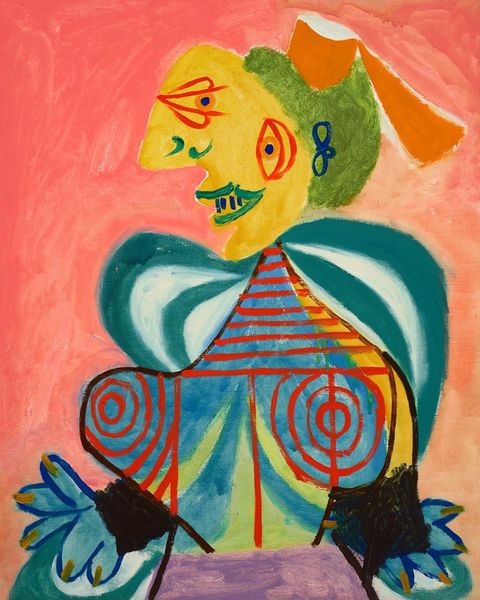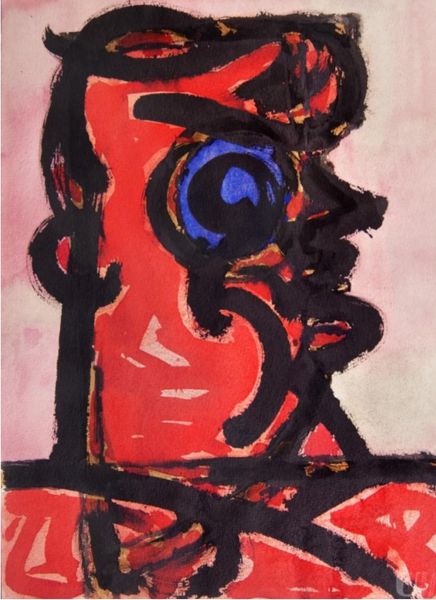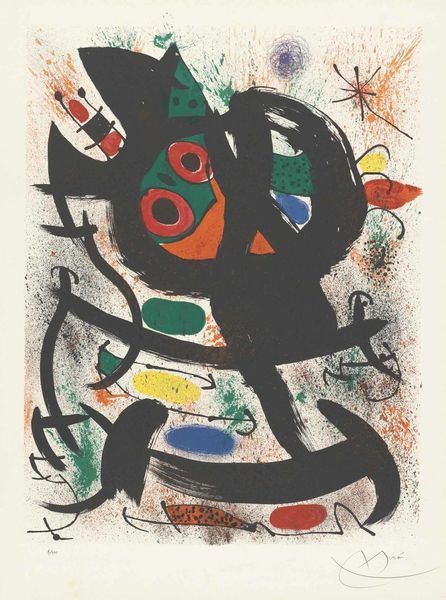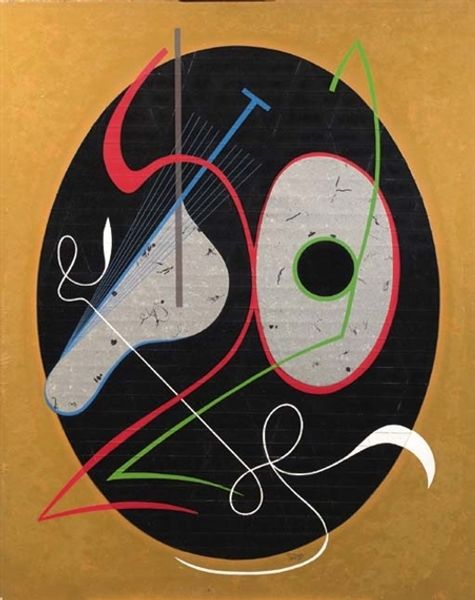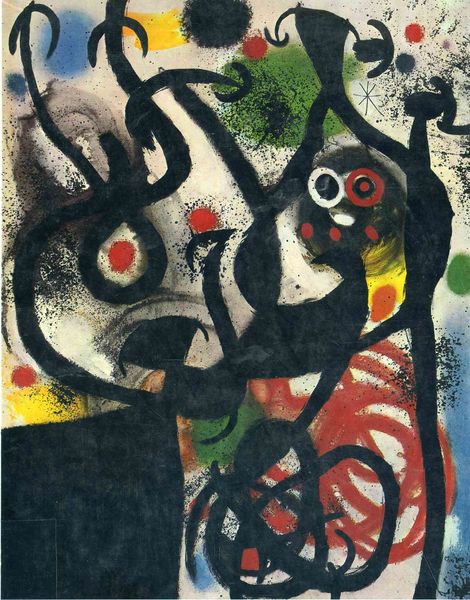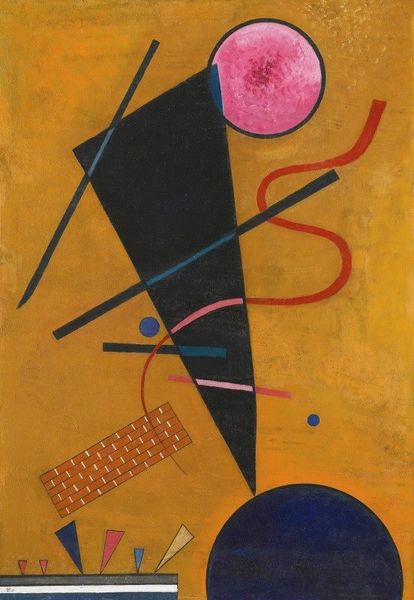
#
pop art-esque
#
popart
#
egg art
#
vector art
#
pop art
#
abstract
#
tile art
#
acrylic on canvas
#
spray can art
#
pop art-influence
#
cartoon style
Copyright: Modern Artists: Artvee
Editor: We're looking at Joan Miró’s *La tige de la fleur rouge pousse vers la lune*, painted in 1952. It's an abstract piece with bold colours on what appears to be canvas. I'm immediately struck by its playful, almost childlike quality. What social or cultural forces might have influenced Miró's style here? Curator: Considering the time, the shadow of World War II and the rise of mass culture undoubtedly had an impact. Miró, like many artists, was grappling with trauma and searching for new forms of expression. Think about the political landscape; anxieties around authoritarianism were still very present. How might this have driven artists towards abstraction? Editor: So, the almost absurd imagery, it's perhaps a reaction to something... a push back? Curator: Precisely. And we see this in how Miró reclaims imagery, especially regarding primitivism. In the interwar years, specifically during the Spanish civil war, artists took on these forms to signal Catalan identity and to push against dictatorial suppression. Does that perspective change your read on the colours and composition? Editor: Yes, it feels less naive and more like a conscious effort to redefine visual language. This wasn't simply about art for art's sake, it was a form of cultural resistance, particularly following World War II, especially when one sees other contemporaries’ practices with automatism, to make works with no constraints. Curator: Exactly. Now, consider how museums and galleries play a role in solidifying the idea of "the artist" in periods of cultural uncertainty, by uplifting them or promoting other forms of "cultural heritage". So, how do you see that working with Miro's reception into museums post-war? Editor: That’s interesting. It highlights how institutional support, especially in the post-war period, helped solidify abstraction as a valid form of expression but might also sanitized or defang art’s initial message of social rebellion, I’d imagine? Thank you; that’s been truly enlightening! Curator: A crucial observation. Recognizing that complex interplay between artist, history, and institution provides a more enriched engagement with any work of art.
Comments
No comments
Be the first to comment and join the conversation on the ultimate creative platform.
